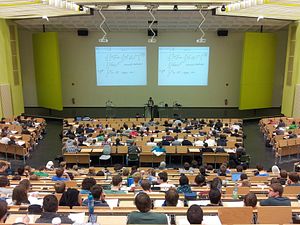Trans-Pacific View author Mercy Kuo regularly engages subject-matter experts, policy practitioners and strategic thinkers across the globe for their diverse insights into the U.S. Asia policy. This conversation with Dr. Asif Chaudhry – Vice President of International Programs at Washington State University; U.S. ambassador to Moldova (2008-2011); and former senior foreign policy adviser to the Chief of U.S. Navy Office (CNO) – is the 186th in “The Trans-Pacific View Insight Series.”
Explain the importance of international exchange between the U.S. and Asia.
The significance of Asia, especially the Pacific Rim, to the United States cannot be overstated. A region that touches almost 90 percent of the global trade in one form or another and is home to five treaty allies of the United States deserves continued attention in all aspects. The potential for conflict over freedom of navigation or other simmering regional unease compels us to look for ways to develop better understanding among the people of the region and with the United States. There is no better way to achieve that objective than people to people contacts through cultural and educational exchange programs, and there is no better way to ensure peace and stability in this vitally important region. It is important, however, that all such exchanges be undertaken with open eyes and a clear positive intent.
Describe the impact of U.S. immigration policy on enrollment rates of students from Asia at U.S. universities.
Although there are multiple factors that contribute to the decline in international enrollments in the U.S., immigration policy has had a strong impact. U.S. institutions report declines in enrollment due to: visa application process or visa delays/denials; general social and political environment in the U.S.; feeling unwelcome in the U.S.; and the inability or the feeling of being unable to secure a job in the U.S. after their studies.
It is also our understanding that the declining rate of students from Asia in the U.S. means that the U.S. is no longer first in attracting the best and the brightest from all over the world as some students are choosing Canada, Australia, etc. over the U.S. due to the immigration policies. Additionally, this means that those schools with decreasing numbers are suffering corresponding cultural and economic losses, which harms both the schools and their broader communities.
Assess U.S. policymakers’ concerns regarding Chinese influence activities, such as Confucius Institutes (CI), on U.S. campuses.
This can be a very controversial topic because of the potential for conflicts among issues of protecting U.S. interests, principles of academic freedom, and concern over curricular control and Chinese state censorship. In this complex environment, it is important to not lose sight of the value of promoting shared cultural understanding. It seems more productive to ask a somewhat different set of questions: a) is the current CI model the best way to achieve the goals of providing Chinese language learning and Chinese cultural understanding and/or, b) how else can this be done without hosting a CI in an era in which it is crucial to intellectually engage with China and protect the integrity of the goals and values of higher education?
What are the downsides of limiting students from Asia to study in the United States?
With only about 3 percent of U.S. students studying abroad, the interaction of students from around the world in the classroom is critical to promoting global leadership and greater intercultural competence. We believe that limiting students from Asia who want to study in the U.S. is detrimental to our institutional goals as well as many other U.S. institutions who aim to provide opportunities for all their students to be engaged globally and to learn to interact with multiple cultures. Limiting students from Asia also has a financial impact on the U.S. economy. Limiting students from Asia may also pose a risk to our ability to recruit the best and brightest from around the world as the “othering” of the visitors and students from some nations suggests the U.S. fears ideas from outside its borders. I have enough faith in our values, that instead of being concerned wouldn’t it be a great accomplishment to expose these visitors to the joys of living in a free and open society that has accomplished so much primarily because of the freedom to explore new ideas?
What is the link between U.S. education policy and public diplomacy?
The link between these two policies should be foundational in creating mutual respect and civility between people around the world. The policies should be parallel and mutually reinforcing, as we should have a U.S. education policy that embraces and welcomes people from all countries and cultures as well as sending students and scholars abroad or incorporating other cultures in our education initiatives at home. These should then help support our public diplomacy initiatives abroad to help raise public opinions and insight into other cultures. Some of the U.S. legacy programs like Fulbright and others, advance opportunities with students and scholars, institutions and agencies, and various local communities to create a connection and understanding that can only come about with meaningful interactions. Without exposing U.S. students and scholars to other cultures of the world and vice versa, we cannot ensure a mindful understanding and appreciation of each other in a global economy. Policy decisions that inhibit the free flow of ideas or the ability to interact with each other are ultimately detrimental to U.S. interests at large.
































